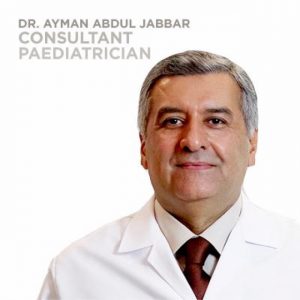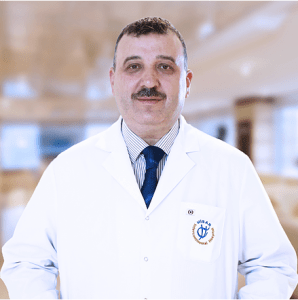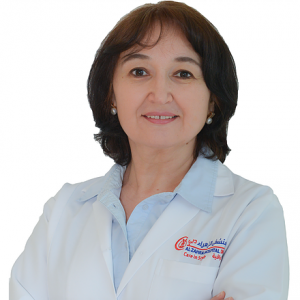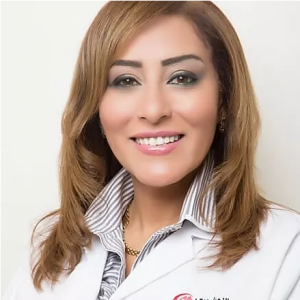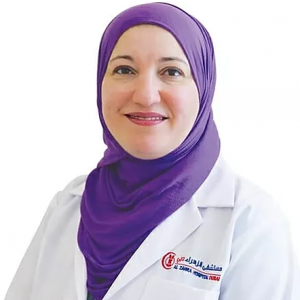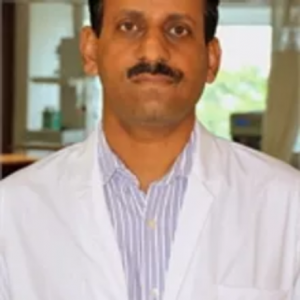Congenital Cystic Adenomatoid Malformation
Congenital cystic adenomatoid malformation (CCAM) is a rare, hamartomatous condition, when the extra growth of variably sized fluid-stuffed cysts occurs and restricts the functioning of lungs in a normal ways, and interferes with the lower respiratory tract. CCAM is usually seen in children and nowadays it can be diagnosed prenatally when the baby is still in the mother’s womb through multiple tests and diagnosis. Read More
Top Doctors For Congenital Cystic Adenomatoid Malformation Treatments
Top Hospitals For Congenital Cystic Adenomatoid Malformation Treatments
Congenital Cystic Adenomatoid Malformation
- TYPE 1 – This is the most commonly found CCAM type. This is very enormous and present in the centre and other small cysts are at periphery.
- TYPE 2 – This is a group of small cysts which promotes congenital growth and type 2 is more dangerous than type 1.
- TYPE 3 – This type is extremely small, uncommon and size is 0.5-0.7 cm in diameter.
- The most reliable and safe option is antibiotics.
- When excess respiratory abnormalities increase mechanical ventilation is used in some hospitals.
- Oxygen Supplementation is also a good option.
- When a patient has large and not easily removable cysts then the fetal ccam method is useful.
- Decentralization of CCAM is done by Thoracocentesis.
- Thoraco-amniotic shunt forms a passage between CCAM and amniotic area to control the fluid drainage.
- For the first diagnosis in a prenatal baby, MRI scan and ultrasound both give excellent results.
- To check the neural tube faults cranial ultrasonography works well.
- For continuous blood supply doppler ultrasound is the safest one.
- CT Scan is best for children, adults and old aged groups as it thoroughly shows the level of CCAM.
- Echocardiography is compulsory in all newborns with CCAM.
- Cerebral ultrasonography is required to keep the central nervous system normal.
- An echogenic (that is, bright) mass in the chest of the foetus.
- Heart displacement from its natural position.
- A flat or averted diaphragm.
- Absence of a visible lung tissue.
Symptoms
About three-quarter of CCAM baby are asymptomatic. However, in the few instances where CCAM baby displays signs and symptoms the following may be included;
- Difficult or laboured breathing, accompanied by intercostal retractions and tachypnoea.
- Grunting respirations.
- Cyanosis.
- Pneumothorax.
- Contracted vesicular murmur and an asymmetrical thorax.
- Breathing problems
- Asymmetrical heart sounds
- Abdominal fluid formation
- Accessory muscle use
- Skin edema
Causes
The exact causes of congenital cystic adenomatoid malformation are yet unknown. CCAM is a very rare abnormality which occurs in only about 1 in 10,000 babies. Why this happens, no one knows. There’s no link to any gene or to any chromosomal abnormality. It also does not run in families and there is no evidence linking it actions or inactions during pregnancy.
All that is known is that the congenital cystic adenomatoid malformation results from the growth an abnormal lung tissue, usually in one of the lung’s lobe
About three-quarter of CCAM baby are asymptomatic. However, in the few instances where CCAM baby displays signs and symptoms the following may be included;
- Difficult or laboured breathing, accompanied by intercostal retractions and tachypnoea.
- Grunting respirations.
- Cyanosis.
- Pneumothorax.
- Contracted vesicular murmur and an asymmetrical thorax.
FAQ
What happens during a pregnancy with a foetus of congenital cystic adenomatoid malformation?
In most cases of congenital cystic adenomatoid malformation, the foetus does well and the mother is able to carry the CCAM baby to term without any problem. The CCAM may even shrink off or disappear during the third trimester of the pregnancy.
However, in a couple of cases, the growth may be life-threatening to the foetus. It might cause the blood vessels to compress, making it harder for the heart to pump to circulate blood, and possibly leads to heart failure.
What is the long term outlook for congenital cystic adenomatoid malformation?
In the long run, the vast majority of CCAM baby will be normal and will not have any long term problems with their lungs. They grow up to be perfectly healthy and normal kids.
Also, CCAM baby with large lesions do extremely well in life. However, their long term outlook depend on receiving expert treatment to avoid potential complications later in life. These set of CCAM baby require highly specialized expert care right from the time of diagnosis, to the point of delivery and surgery, to guarantee the best possible long term outcomes.
What happens at the delivery of a CCAM baby?
Provided all went well during the pregnancy, there is no cause for alarm, and, also, there should be no need to alter the timing or method of delivery.
What Are Complications In CCAM?
- Give a rise to hydrops
- Pulmonary stress
- Premature delivery
- Recurrent pneumonia
What Is The Prognosis For CCAM?
70-75% of prenatal babies get saved every year worldwide. If the fetal hydrops and huge lesions aren't becoming a barrier then survival rates increase by 85-90%.
What Activities Should Not Be Performed By A Person With CCAM?
- High and long jumps
- Swimming
- Skydiving
- Paragliding
All these should be strictly avoided.
What Happens In Pregnancy ?
If a child is suspected with CCAM the doctors do the diagnosis and tests such as several ultrasound, MRI, CRX, etc. in the 5th month of pregnancy. In maximum cases when a child grows, eventually CCAM starts contracting and at the end it vanishes. But in rare cases if CCAM is left untreated it may lead to death.
How To Treat CCAM Before The Birth Of A Baby?
It is not easy but if Mom's health is good then it can be treated by taking out the half of the body of a baby and after treating it again the uterus is closed.












